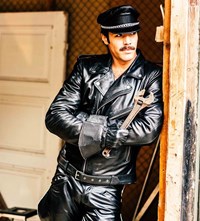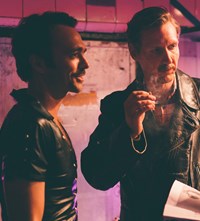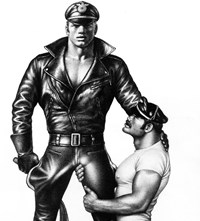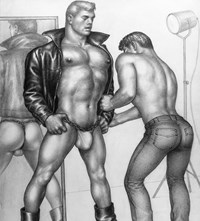We speak to Dome Karukoski about his biopic of the provocative artist which is about to hit UK cinemas
- TextDaisy Woodward
The name Tom of Finland is synonymous with the cartoonish depictions of leather-clad men, with bulging muscles (and crotches) and well-groomed moustaches, that the late homoerotic artist conjured, and the gay revolution they sparked thereafter. Lesser-known however is Touko Laaksonen – the man behind the pseudonym; the World War II veteran with a knack for drawing and a fetish for uniforms, who was forced for much of his adult life in Finland to keep his sexuality a secret for fear of imprisonment, castration and other such horrors. It was Laaksonen, and the series of events that triggered his reincarnation as Tom of Finland, that caught the attention of celebrated Finnish director Dome Karukoski, resulting in his new biopic Tom of Finland, which arrives on UK screens tomorrow.
“When I first encountered Tom of Finland’s work, he was still very much an underground artist,” the filmmaker tells us over the phone from his homeland. “I must have been 12, and a friend of mine had nicked one of his comics. We were very young and didn’t really understand sexuality at all – we just saw it as a naughty comic book; a lot of the lines he used were very funny.” This sense of humour, or “the wink in Laaksonen’s art” as the director terms it, made a big impression on the young Karukoski and triggered a lifelong interest in Laaksonen’s work, compounded by his stint at art school, where he “came to understand the artistry and profoundness” behind the draughtsman’s work. “I realised then that it was not just about the male body, but about the attitude the work delivers,” he explains. “It’s very much about joy, liberation and pride: a lack of shame.” When, in 2011 – after reading Laaksonen’s autobiography and various other source material about his “surprisingly dramatic and cinematic” life – Karukoski set his mind to bringing Tom of Finland to the big screen, it was these qualities that he was determined to convey. And he certainly succeeds.
The film begins in the throes of the Second World War, where Laaksonen, a serious young soldier played by Pekka Strang, spends his working days enduring the traumas of the frontline and his downtime cruising parks in full uniform in search of intimacy and excitement. He returns home a decorated hero, but life in peacetime Helsinki does not signal liberation for our brooding protagonist, who takes an art directing job at an ad agency, alongside his sister Kaija (Jessica Grabowsky). Laaksonen is not embarrassed or ashamed of his sexuality, but the homophobic attitude of Kaija, and the grave threat of being discovered and punished accordingly, serve as a hindrance to his coming out, and for a time his only release is dreaming up freely pleasure-seeking characters – often sporting the uniforms of his repressors – in the privacy of his bedroom.
This all changes with the arrival of the dashingly handsome dancer Veli “Nipa” Mäkinen (Lauri Tilkanen), the Laaksonens’ new housemate, who soon falls for Touko’s charms. The duo embark on a love affair, which would last until Mäkinen’s death 28 years later, and Mäkinen gives Laaksonen the confidence he needs to seek out an international audience for his drawings, beyond the gay club patrons of Helsinki. A number of thrilling, covert missions ensue, including a hair-raising near-outing in Berlin – “I was so intrigued by the spy story elements of his life, which most people have no idea about,” Karukoski notes – before Laaksonen adopts his iconic nom de plume and finds a willing publisher in America.
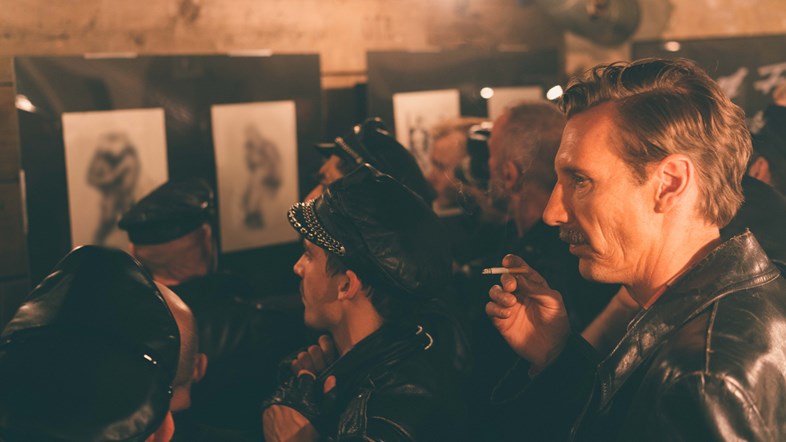
The second half of the film centres on Tom of Finland – and the whole mood shifts gear accordingly, the formal, painterly cinematography and traditional set design giving way to a world of sunshine, freedom and modernity. This change is prompted by Laaksonen’s first trip to America, the result of numerous requests from his Los Angeles-based fan club to pay them a visit. He is met by a limousine, containing a leather outfit for him to change into, inspired by those of his characters, and a gin and tonic for the ride: moments later his Clark Kent transformation is complete. “That’s a true story,” Karukoski chuckles. “He could finally live the life of Tom of Finland.” He arrives at the house of his publisher Doug, a gay rights activist, to be greeted by a whole host of leather-clad men, frolicking by the pool, epitomising the famously free spirit of 1970s, pre-AIDS-crisis California – one which Laaksonen is stunned to discover that he himself has helped to cultivate.
“I was very keen to differentiate between the two sides of Tom of Finland’s life,” explains Karukoski, “and we did this in a number of ways. Firstly, we wanted the overall look of the film to be international – because Laaksonen’s style of drawing is not very Finnish. So we opted for a Danish cinematographer and a Swedish production designer, and then we also commissioned two composers to score the separate parts of Laaksonen’s story. Finnish composer Hildur Guðnadóttir brings the voice of Touko Laaksonen to the film and Lasse Enersen, a German musician who lives in Los Angeles, creates the sounds of Tom of Finland’s life in LA.” The consequent sense of emerging from darkness into light was integral to the director’s overall vision for the film, he explains. “When Aleksi Bardy [the film’s writer and producer] and I set out to write the script, we didn’t want to make a biopic defined by certain moments from certain years in Laaksonen’s life. We wanted to recreate the feeling of liberation his work inspired: a feeling of joy, born of casting off the shackles of oppression he experienced in Finland. We wanted people to leave the cinema in the mood for dancing, for going for a drink and having a kiss.”
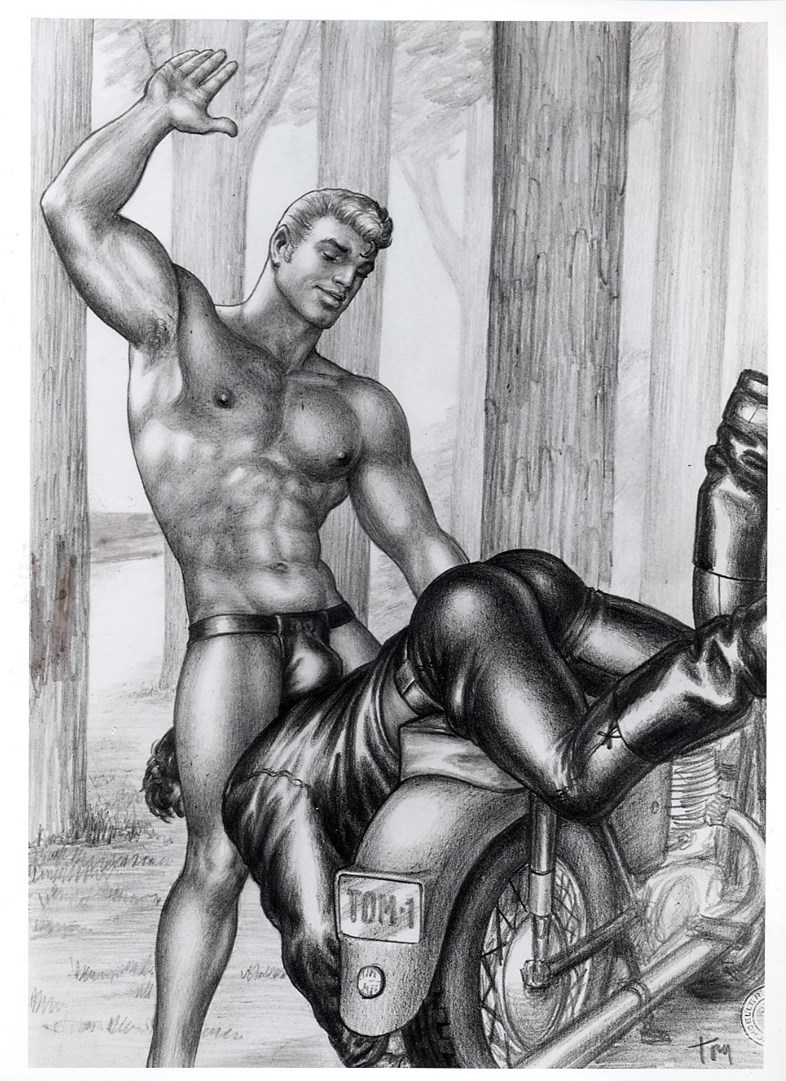
In fact, the director and his talented ensemble manage to achieve both. Strang and Tilkanen are mesmerising as Laaksonen and Veli, one pensive and wry, the other vivacious and fay. Prior to filming, Strang built upon Bardy and Karukoski’s research for the script – which had involved trawling through the Tom of Finland Foundation archive for letters and personal photographs, and interviewing various friends of the artist – by taking piano and drawing lessons for the part, and travelling to Los Angeles to meet the remaining members of Tom’s Men (Laaksonen’s fan club). And his hard work paid off. “We had a very emotional experience at one of the screenings when Touko’s two nephews came along,” says Karukoski. “One of them came up to me afterwards crying, and said, ‘That was Tom. You just brought Touko and Veli [who the nephews knew only as Touko’s roommate in their youth] to the screen.’ It was a truly wonderful moment.”
But just as the director intended, it is an overall feeling of joie de vivre and unfettered pride that pervades as you leave the cinema; a vital reminder that art has the power to incite positive change in a world where progression continues to be stunted by figures of authority. “One of my main hopes for the film is that it will be shown in Russia,” says Karukoski on the subject. “And I’ve promised myself that if they don’t distribute it there that we will send a pirate version and get it seen it that way!”
Tom of Finland is in cinemas from tomorrow.
